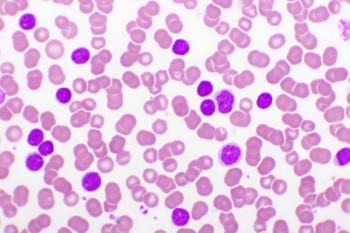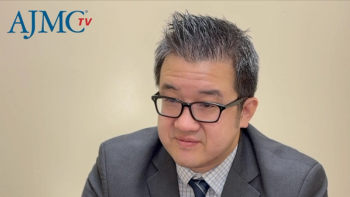
Healthcare Re-Reform: Value-Based Care Remains a Constant Theme
While many questions on the outlook of healthcare “re-reform” remain afloat, many important insights into President Donald Trump’s potential path forward are now identified.
Both Republicans and Democrats agree healthcare is too expensive in the United States. While the focus of repealing Obamacare will affect access to care, the cost of delivery and quality of care remain ascendant challenges. Patients and payers continue to demand high-quality care and sophisticated tools to demonstrate their quality. Anchoring on these truths support a fundamental premise that providers and health systems who want to succeed in this uncertain environment must remain focused on delivering value—the highest-quality care at the most efficient price.
While many questions on the outlook of healthcare “re-reform” remain afloat, many important insights into President Donald Trump’s potential path forward are now identified. Here a few key trends indicating high-value care will remain the important differentiator for successful health systems and providers.
- Greater consumer responsibility for health spending: The existing trend of shifting costs to consumers and patients is unlikely to be slowed by any of the proposals set forth by Trump or his Cabinet. In fact, greater use of tax credits and health savings accounts (HSAs) is likely to accelerate this shift. An increasing array of online tools are making it easier for consumers to identify lower cost providers and differentiate based on quality. As more of the cost of care comes directly out of consumers’ accounts, expect continued shifts away from high-cost providers. For example, this shift is already evident in elective outpatient imaging.
- Sustained pressure on Medicare spending: Medicare makes up 15% of the federal budget today and is unlikely to see support for large spending increases from HHS Secretary Tom Price, MD, or CMS nominee Seema Verma.1 Even as specific programs change and evolve within CMS, controlling costs will continue to be a priority for the new administration, especially with Speaker Paul Ryan, R-Wisconsin, leading the House.
- Continued demand for high-value, low-cost healthcare from employers: According to data collected by PwC’s Health Research Institute, health insurance premiums are expected to increase by 6.5% in 2017. In addition, more than half of all Americans get health insurance through their employers and these employers are feeling crushed by rising costs. Employer focus on controlling costs, such as through the use of high-deductible health plans, will remain a key component in healthcare selection. It is likely we’ll see a rising number of employers enabling access to care via on-site primary care clinics available to employees. Partnerships with major insurers to provide coverage outside of these clinics will remain, but the majority of care will be administered and managed from primary care sites managed by the employer.
- More competition among payers: Changes such as allowing interstate sales of health insurance products is likely to drive competition among payers for increasingly price-sensitive consumers and cost-conscious employers. This competitive environment will drive continued growth of emerging plan structures, such as tiered-benefits and narrow networks that seek to reward high-value providers and punish high-cost, highly variable ones. It’s also likely that more payers will launch bundle programs through these narrow networks with providers who focus on high-value care in specialist areas. This will drive further consolidation through the integration of multiple care settings, such as ambulatory surgery centers and integrated delivery networks.
- Increased experimentation at the state level: Those advocating for Affordable Care Act repeal align with increased control at the state-level, especially for Medicaid. Paying attention to local state environments is likely to be even more important in the coming months and years. We’ll likely see strong success stories, and some failures, that will provide lessons for the whole nation.
- Lessening the role of CMMI: Republicans have also pushed back on the mandatory reporting requirements and participation in programs that have come out of Center for Medicare and Medicaid Innovation (CMMI). In September 2016, a group of 178 House Republicans and 1 Democrat signed a letter asking CMS to “cease all current and future planned mandates” under CMMI. The letter denounces new initiatives may compromise patient care, as “patients are blindly being forced into high-risk, government-dictated reforms with unknown impacts.”2
Other criticism from lawmakers is that there are too many programs to manage.3 While Democrats argue important innovations are more likely to be discovered by exploring different approaches, Republicans are skeptical that a federal agency can generate innovation and defer the role to states or other stakeholders like private payers. With a new Republican Congress, we could see a refocusing on certain programs that have already produced results, like bundled payments.
This year will face more pressure to control costs, both inside and outside of Washington, DC. Health systems and providers need to recognize variability in quality and cost is becoming a large influencer of both payment decisions and patient choice. Legislation and existing regulation, like the Medicare Access and CHIP Reauthorization Act, already create the impetus for moving away from a fee-for-service world. One of the most important parts of any plan to improve quality and reduce costs is engaging physicians in the process of standardizing care.
References
1. Cubanski J, Neuman T. The facts on Medicare spending and financing. Kaiser Family Foundation.
2. Sullivan P. Lawmakers call for end to Medicare ‘experiments.’ The Hill.
3. Bishop TF, Casalino LP. Symbol of health system transformation? Assessing the CMS innovation center. N Engl J Med. 2015;372(21)1984-1985. doi:
Newsletter
Stay ahead of policy, cost, and value—subscribe to AJMC for expert insights at the intersection of clinical care and health economics.









































